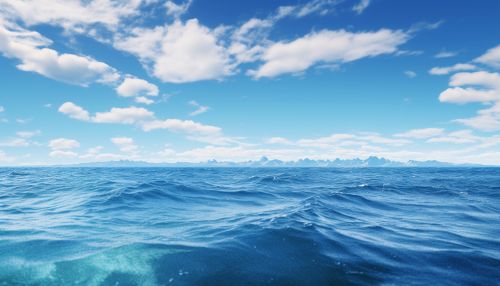Trade winds
Introduction
The Trade Winds are a consistent pattern of winds that blow towards the equator from the northeast in the northern hemisphere and from the southeast in the southern hemisphere. These winds are part of the larger atmospheric circulation system known as the Hadley Cells, named after English meteorologist George Hadley.


Formation
Trade winds are formed due to the combination of three primary atmospheric conditions: the sun's heating effect on the atmosphere, the rotation of the earth (the Coriolis Effect), and the presence of large high-pressure systems over the oceans.
Sun's Heating Effect
The sun heats the earth's surface unevenly, creating temperature differences between the equator and the poles. This uneven heating results in the creation of large-scale atmospheric convection currents. The warm air at the equator rises high into the atmosphere, then cools and descends at approximately 30 degrees latitude north and south, creating a circular pattern of air movement known as a Hadley cell.
Coriolis Effect
The rotation of the earth causes moving air and water to appear to turn to the right in the northern hemisphere and to the left in the southern hemisphere. This apparent deflection is the Coriolis effect. In the case of the trade winds, the Coriolis effect causes the winds to blow from the northeast in the northern hemisphere and from the southeast in the southern hemisphere.
High-Pressure Systems
The descending air in the Hadley cells creates areas of high pressure over the oceans at approximately 30 degrees latitude. These high-pressure systems produce steady winds that blow back towards the equator, completing the circulation of the Hadley cell.
Characteristics
Trade winds are characterized by their consistency of direction and their steady, moderate strength. They typically blow from the northeast or southeast towards the equator, and are most consistent over the oceans. The trade winds also have a significant effect on the climate and weather patterns of the regions they affect.
Consistency
One of the defining characteristics of the trade winds is their remarkable consistency. They blow in the same general direction throughout the year, although their exact direction and strength can vary somewhat with the seasons. This consistency made the trade winds a reliable route for sailors during the age of exploration, and they continue to be important for modern shipping.
Strength
Trade winds are typically moderate in strength, with average wind speeds in the range of 15 to 20 knots (about 17 to 23 miles per hour). However, they can occasionally be much stronger, particularly in certain regions and at certain times of year.
Effect on Climate and Weather
The trade winds have a significant effect on the climate and weather patterns of the regions they affect. They help to regulate the temperature of the tropics by bringing cool air from higher latitudes. The trade winds also contribute to the formation of tropical rainforests by bringing moisture-laden air to the equator, and they play a key role in the formation and movement of tropical storms.
Historical Significance
The trade winds have played a crucial role in human history, particularly during the age of exploration. The reliable and consistent nature of these winds allowed European explorers to make their voyages to the New World. The trade winds also facilitated the trade routes that were established between Europe, Africa, and the Americas during the colonial period.
Impact on Maritime Activities
Today, the trade winds continue to have a significant impact on maritime activities. They are particularly important for trans-oceanic sailing, where they provide a reliable source of wind power. The trade winds also influence the routes and schedules of commercial shipping lines.
